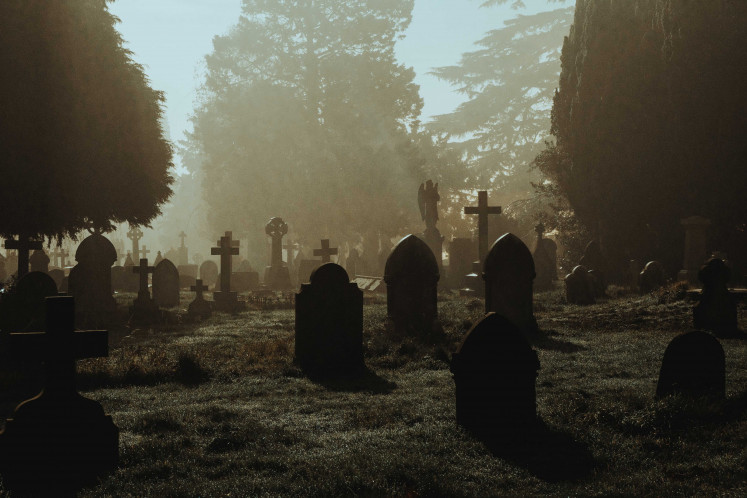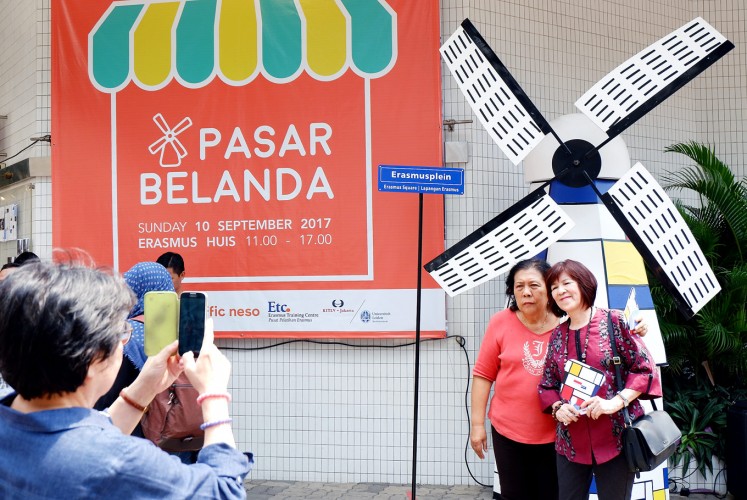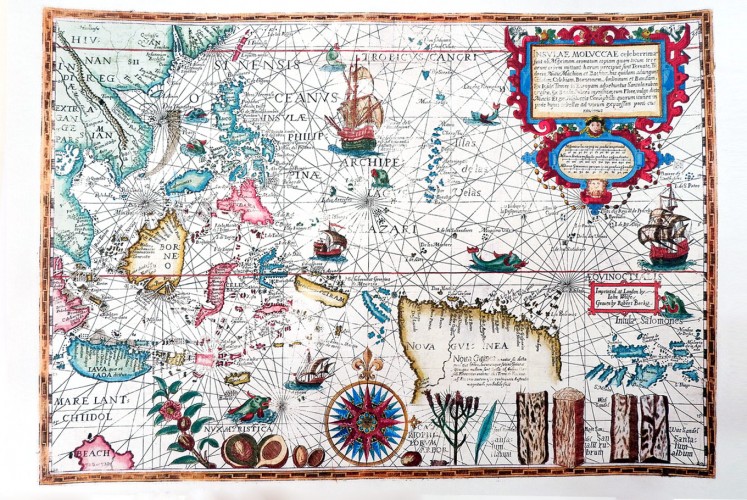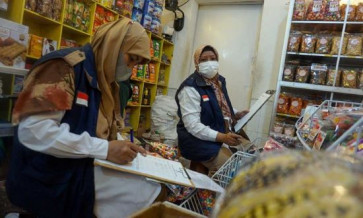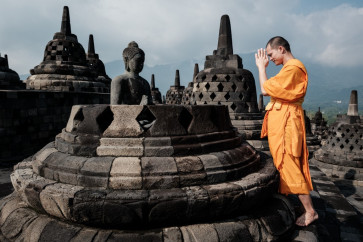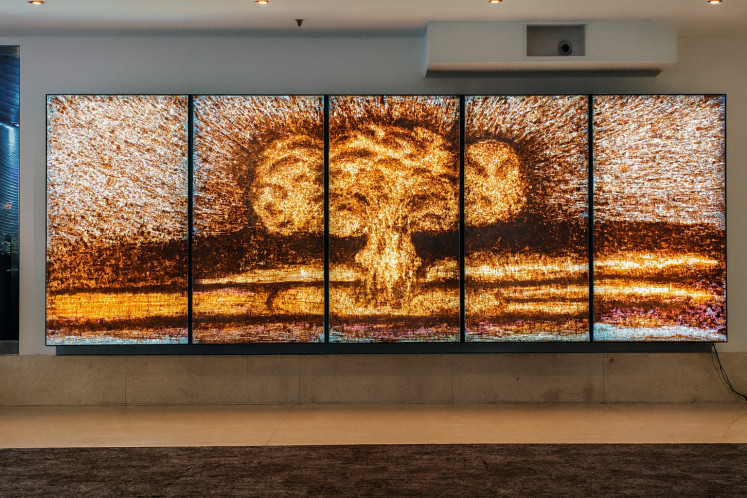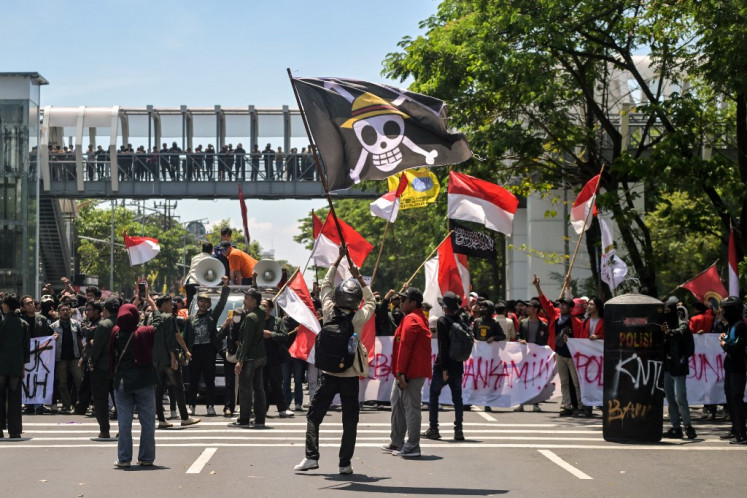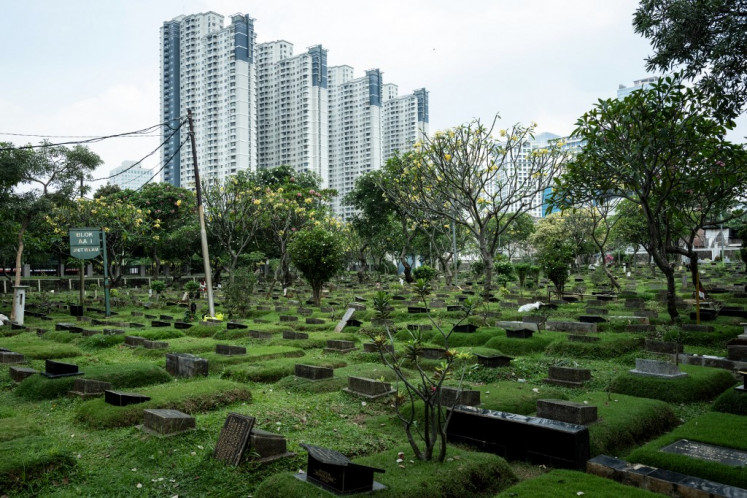Popular Reads
Top Results
Can't find what you're looking for?
View all search resultsPopular Reads
Top Results
Can't find what you're looking for?
View all search resultsExploring the Netherlands in Pasar Belanda
Change text size
Gift Premium Articles
to Anyone
M
ore than 3,000 people recently flocked to the Dutch cultural institute Erasmus Huis in South Jakarta to experience a taste of the Netherlands.
Among them was teacher Sinta Fatimah, who was surprised to see a photograph on display depicting Iranian women putting away their guns after a ceremonial parade. Meanwhile, her student, Muhammad Aditya Kurniawan, observed a photo of a black rhino that had been killed for its horn in South Africa.
Sinta and Muhammad were visiting the World Press Photo Exhibition, which was a part of the fifth Pasar Belanda (Dutch Market) event at Erasmus Huis.
For Sinta, who teaches history at state high school SMA Muhammadiyah 12 in East Jakarta, the photo exhibition was a bonus because she had brought her students to Pasar Belanda to learn about Dutch culture and history through the country’s food, books and music.
“The Dutch colonized Indonesia for more than 350 years. I want my students to know that the Netherlands is not just associated with [conflict]; it also has a good side,” said the 21-year-old.
During the opening of Pasar Belanda, which took place on Sept. 10, and the launching of Erasmusplein (Erasmus Yard), Dutch Ambassador to Indonesia Rob Swartbol said the event aimed to connect Dutch communities living in Indonesia with Indonesians who once studied and worked in the Netherlands.
Mini-Holland: Visitors pose in front of a miniature of a Dutch windmill. (JP/A. Kurniawan Ulung)Drawing 4,120 visitors last year, the annual event not only offers food, books and souvenirs from the Netherlands, it also provides visitors with information about Dutch culture, education and training from Dutch organizations.
Among other things, a miniature of a Dutch windmill — a historic icon of the Netherlands — lured visitors into posing with it for a photo upon entering the makeshift market.
Another attention-grabbing feature was the Volendam photo booth, which gave revelers yet another photo opportunity by dressing up in Dutch traditional costumes, one of which comprises a kraplap (a bib-like rectangular cloth), a striped skirt, a black apron, a kletje (black wool jacket) and clogs. Dina Dwi Astuti, 39, who found out about the event through Instagram, brought her daughter to Pasar Belanda just to try on the traditional outfit.
“It is funny. The clogs are really big; bigger than the ones I have. It looks like I’m in Holland, right?” she said with a laugh while showing off her photograph, which cost Rp 150,000 (US$11.3).
Dina was also thrilled to find a book she had been searching, Kakawin Sumanasantaka, being sold at an affordable price.
This book is expensive overseas. Here, I only paid Rp 50,000 [for it],” she said.
Like Dina, Tomi Tri Anggara, who studies Dutch literature in the University of Indonesia (UI) in Depok, West Java, visited Pasar Belanda to look for discount Dutch books at the Erasmus Huis library.
For Rp 5,000, Tomi bought Zomerhitte (Summer Heat) by his favorite Dutch author, Jan Wolker, who is considered one of the “Great Four” writers of post-World War II Dutch literature.
Tomi, who dreams of continuing his studies at Leiden University, never misses Pasar Belanda because it provides updated information about Dutch government scholarships, such as StuNed, the Orange Tulip Scholarship and the Netherlands Fellowship Program (NFP), all of which will start registration early next year.
Antiquity: A copy of an antique map of Indonesia called Insulae Moluccae Celeberrimae. (JP/A. Kurniawan Ulung)While the adults flocked to the Erasmus Huis library and auditorium, children spent their time at a kid’s corner provided by the Netherlands Inter-community School (NIS), which has existed in Jakarta since 1962.
As always, Pasar Belanda also featured food stalls boasting Dutch culinary delights, such as stroopwafel, a popular cookie made from two thin “waffle” layers with a syrup filling, and gevulde koeken (filled cookies).
“Historically, stroopwafel is a street snack from the city of Gouda,” said Hilda Spanjaart-Kalman, owner of the Stroopwafel Huis bakery.
Hilda, who is an Indonesian and whose husband is Dutch, said that although stroopwafel was from the Netherlands, it is also very popular in the archipelago.
The event also featured imported Netherlands souvenirs, such as keychains, magnets, wooden shoes and clogs. Blue Delft windmill miniatures, wooden tulips and miniatures of the Amsterdam canal were some of the visitors’ favorites. Some souvenirs were handicrafts created through a technique called decoupage, which involves decorating an object with patterned paper or cut-outs and then covering it with varnish or glue.
Children from Tangerang-based orphanage Asih Lestari, for example, had made tissue boxes, shoes and purses that they decoupaged with paper napkins imported from the Netherlands.
“We try to boost the children’s confidence because here,” said Asih Lestari mentor, Ratniwati Darmawan, who learned the art while living in the Netherlands from 1991 to 1997.
Another interesting item on display at Pasar Belanda was a copy of an antique map of Indonesia entitled Insulae Moluccae Celeberrimae. It was engraved by Petrus Plancius, who was a renowned Dutch engraver and the first hydrographer to the Dutch East India Company (VOC).
The map contains the most detailed cartographic depiction of the region at the end of the 16th century, which Dutch trader Jan Huygen van Linschoten had used to reach Indonesia.
The original version of the map is available at Bartele Gallery in the Mandarin Oriental Hotel Jakarta, and costs more than Rp 1 billion as it is the world’s rarest map of the Indonesian archipelago.


